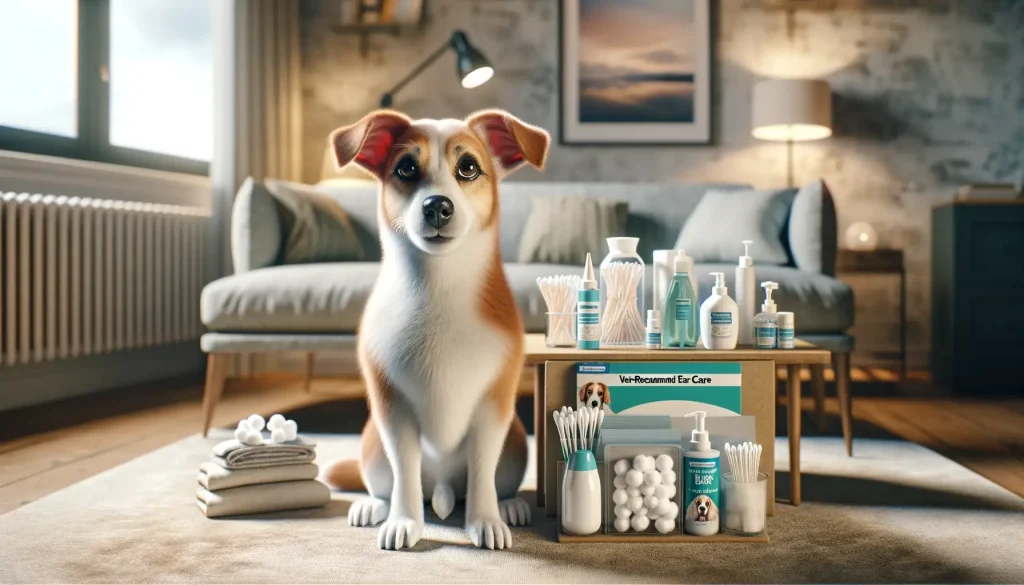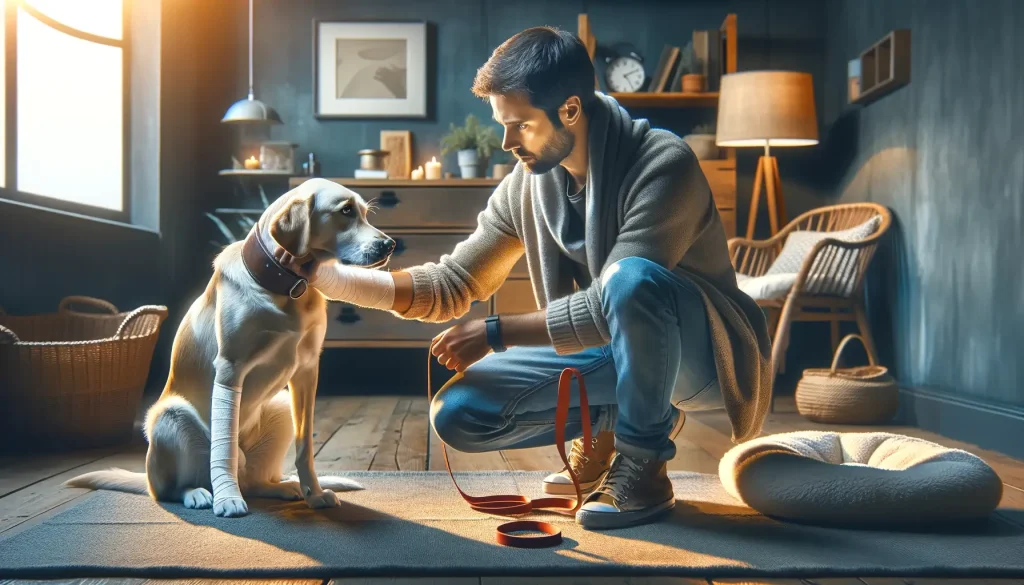
Spotting and Managing Dog Concussions
Dogs are more than pets; they’re family. Just like any family member, their health and wellness are a top priority for us. An often-overlooked condition that can affect our furry friends is a concussion. Yes, you read that right. Can dogs get concussions? Absolutely. Concussions in dogs are brain injuries resulting from a direct impact on the skull or a sudden stop-and-go motion, causing the brain to collide with the skull. This can lead to significant injuries.
Several incidents can lead to a concussion in dogs, including car accidents, falls, and roughhousing with other dogs. If you suspect your dog has a concussion, it’s critical they see a veterinarian as soon as possible for an evaluation and care. Symptoms of a concussion can vary but may include unconsciousness, pupils of different sizes, balance or walking difficulties, and rapid eye movement.
But once you suspect a concussion, what should you do? Here’s a quick guide:
- Ensure the immediate danger has passed.
- Check if your dog is conscious. Take unconscious dogs to an emergency vet immediately.
- If conscious, move them to a quiet area and monitor their symptoms.
- Remove any neck or head restraints to allow them to rest comfortably, preferably with their head elevated.
Preventive measures include keeping your dog away from traffic, using guardrails in high places, and avoiding rough play with larger dogs. But the question remains, how can understanding concussions in dogs improve our response to emergencies and help us prevent them?
Initial Actions for Dog Concussion
Realizing your dog may have a concussion can be alarming. Immediate action can make a significant difference. If an incident occurs and you suspect a concussion, follow these crucial steps:
- Ensure safety: First, make sure the immediate danger that caused the potential injury has passed. This may mean moving your dog away from traffic or a risky play area.
- Assess consciousness: Gently check if your dog is conscious. For dogs showing signs of unconsciousness, immediate veterinary attention is necessary. Time is of the essence.
- Quiet environment: If the dog is conscious but seems dazed or confused, move them to a quiet, safe area to prevent further stress or injury. This will also make it easier for you to monitor their condition.
- Elevate and comfort: While waiting for or deciding on veterinary care, remove any restraints around the neck or head. If possible, keep the dog’s head slightly elevated and provide a comfortable resting place.
It’s important to remember, even if your dog appears to recover quickly, a veterinary examination is still crucial. Concussions can have delayed symptoms, and a professional assessment can rule out or identify hidden injuries.
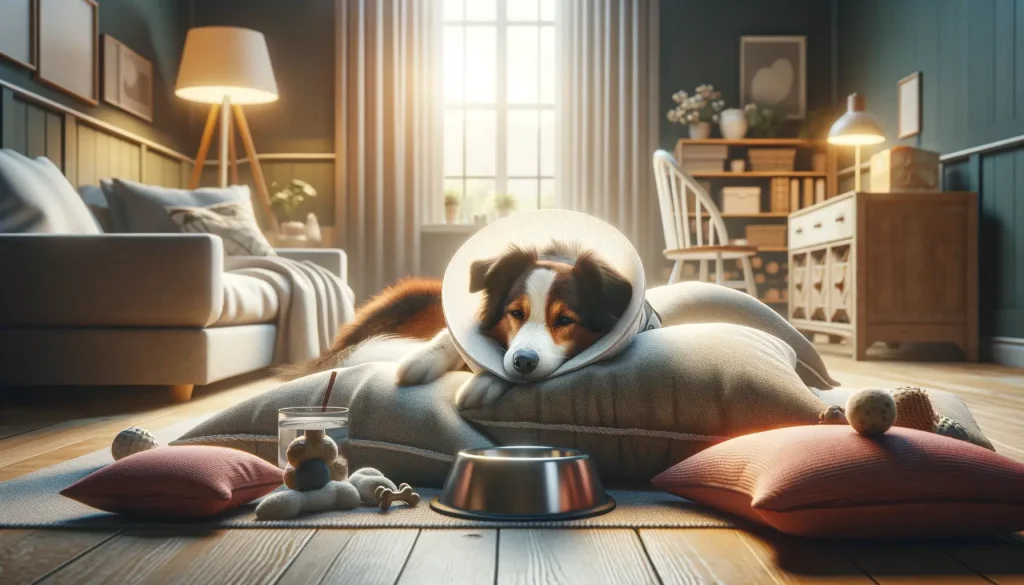
Preventing Dog Concussions
Prevention is key in avoiding serious injuries like concussions. Simple adjustments to your dog’s environment and awareness can drastically reduce the risk:
- Protect from traffic: Always keep your dog on a leash when near roads or traffic. This simple measure can prevent car accidents, one of the common causes of concussions.
- Use guardrails: For dogs that live in homes with stairs or elevated decks, installing guardrails can prevent dangerous falls.
- Monitor playtime: Supervise interactions with other dogs, especially if the play becomes overly rough or involves larger dogs. Consider playtime with similar-sized or gentler dogs to minimize risks.
By understanding dog concussions, signs to watch for, and steps to take following an injury, you can ensure your furry friend stays safe and healthy. Remember, preventive measures and quick action in case of an injury can make all the difference.
At-Home Care for Your Dog After a Concussion
If your dog has experienced a concussion, it’s imperative to know how to care for them once you’re back home from the vet. Proper at-home care can support their recovery and prevent further complications. Here’s what you can do:
- Monitor closely: Keep a close eye on your dog for any changes or worsening of symptoms. Be attentive to their needs and comfort.
- Quiet room: Create a calm and quiet environment for your dog to rest in. Loud noises and bright lights can stress their system, slowing down the recovery process.
- Limited movement: Encourage your pet to rest as much as possible. Limit their physical activity to prevent further injury to the brain. This means no running, jumping, or rough playing.
- Easy access to essentials: Make sure food, water, and a comfortable place to sleep are easily accessible. You want to avoid having your dog strain itself or need to navigate stairs.
- Medication adherence: If the vet has prescribed any medications, ensure you give them as directed. Correct medication can reduce symptoms and support recovery.
Remember, concussions can vary in severity. Always follow your vet’s recommendations closely and schedule follow-up visits to monitor your dog’s progress.
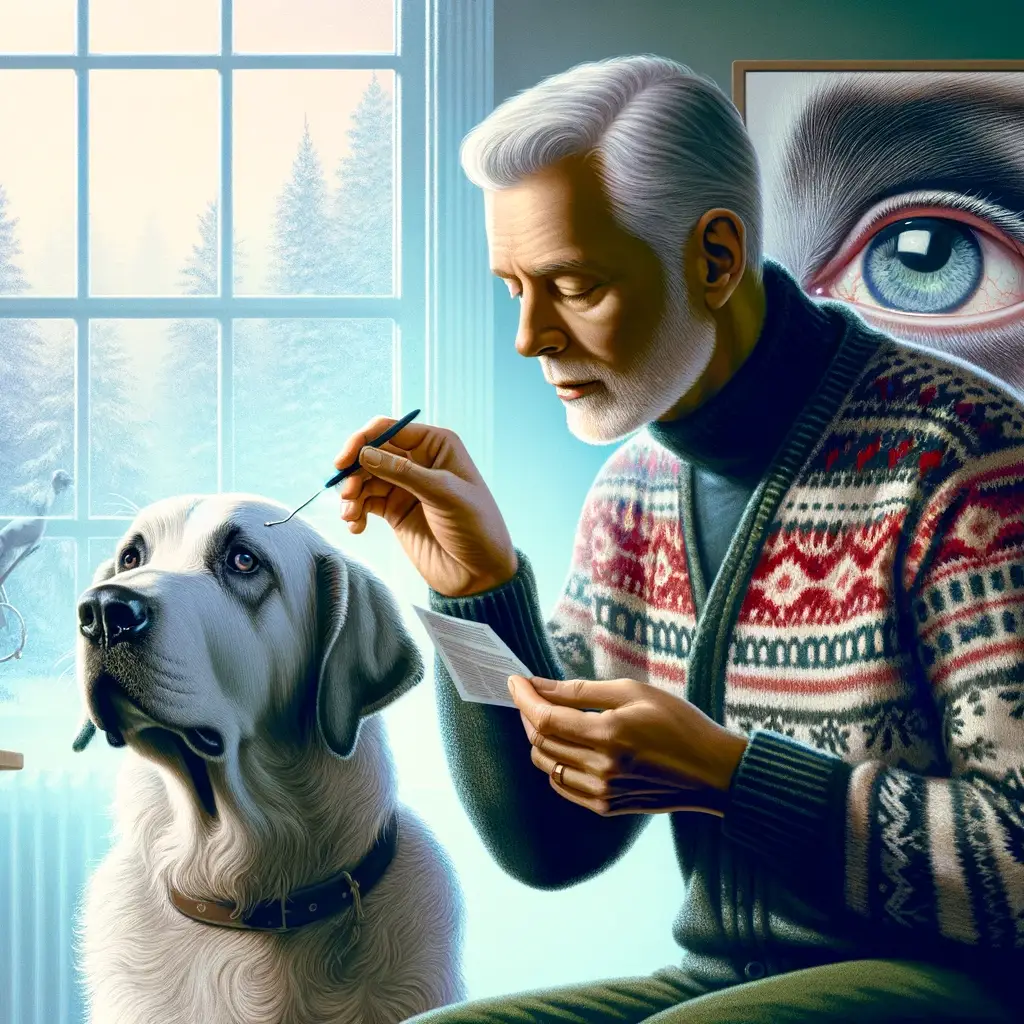
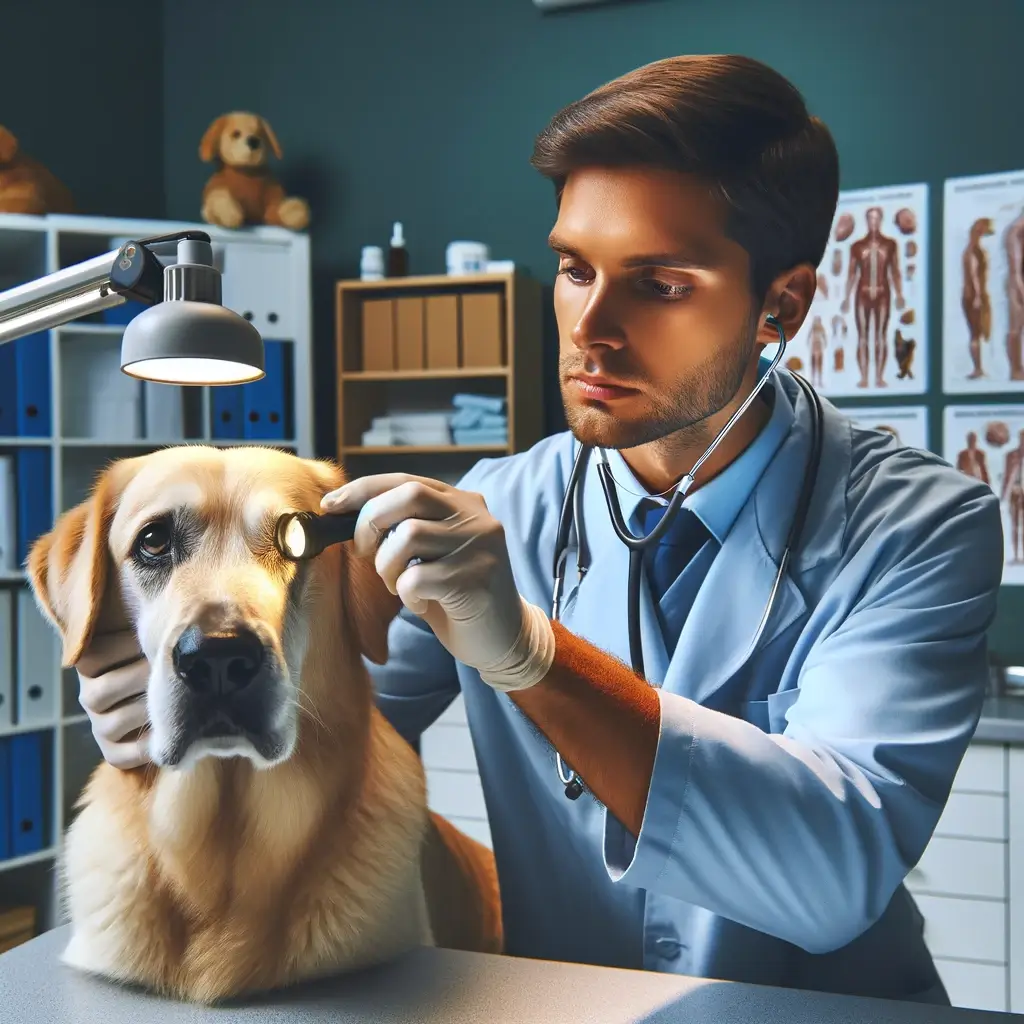
Serious Signs and When to Visit the Vet
If you suspect your dog has suffered a concussion, determining when to seek veterinary help is crucial. Concussions in dogs are caused by brain injuries resulting from impacts on the skull or rapid acceleration and deceleration movements. Such incidents can lead to the brain colliding with the skull, causing damage.
Common causes of concussions include car accidents, falls, and roughhousing with other dogs. While some signs may be immediately evident, others can develop or worsen over time, underscoring the essence of close monitoring and timely veterinary consultation.
Here are key symptoms that indicate an urgent need for a vet visit:
- Unconsciousness or a sudden collapse.
- Pupils of different sizes or unresponsive to light, which can indicate pressure or injury inside the skull.
- Balance or walking difficulties, showcasing potential brain or inner ear involvement.
- Rapid eye movement or unusual eye flickering, which may signal nerve or brain issues.
- A low level of consciousness, where your dog seems overly drowsy or unresponsive.
In the event of these symptoms:
- Immediately ensure safety by removing them from the danger source, be it a busy road or a risky play area.
- Check consciousness levels; if your dog is unconscious, they require immediate emergency veterinary care.
- If they are conscious but displaying symptoms, move them to a quiet space to avoid stress and monitor their condition closely.
- During transit to the vet or while waiting for medical help, remove any neck or head restraints to ease discomfort and allow for a comfortable rest, keeping the head elevated if feasible.
Even if your dog appears to recover from what looks like a mild incident, a veterinary check is paramount to ensure there’s no internal damage or delayed symptoms. Concussions can have subtle signs, and professional evaluation is essential for proper diagnosis and treatment.
Beginner Guide to Raising Quail at Home
What are the Signs of a Dog Concussion?
What Causes Your Dog’s Ears to Smell Bad?
When your dog’s ears start to emit an unpleasant odor, it might leave you puzzled…
Methimazole Treatment for Cat Hyperthyroidism
Methimazole plays a crucial role in managing feline hyperthyroidism, a condition marked by an overactive…
Got Hummingbirds in your Backyard? Here’s How to Care for Them.
Why Does Your Cat Pee Outside the Litter Box?
Cat’s Litter Box Issues It’s not uncommon for cat owners to face the frustrating dilemma…


